How to grow heather – this versatile shrub can add long-lasting color and texture to pots and beds
Expert advice on when to plant Calluna vulgaris, and how to care for this hardy evergreen shrub
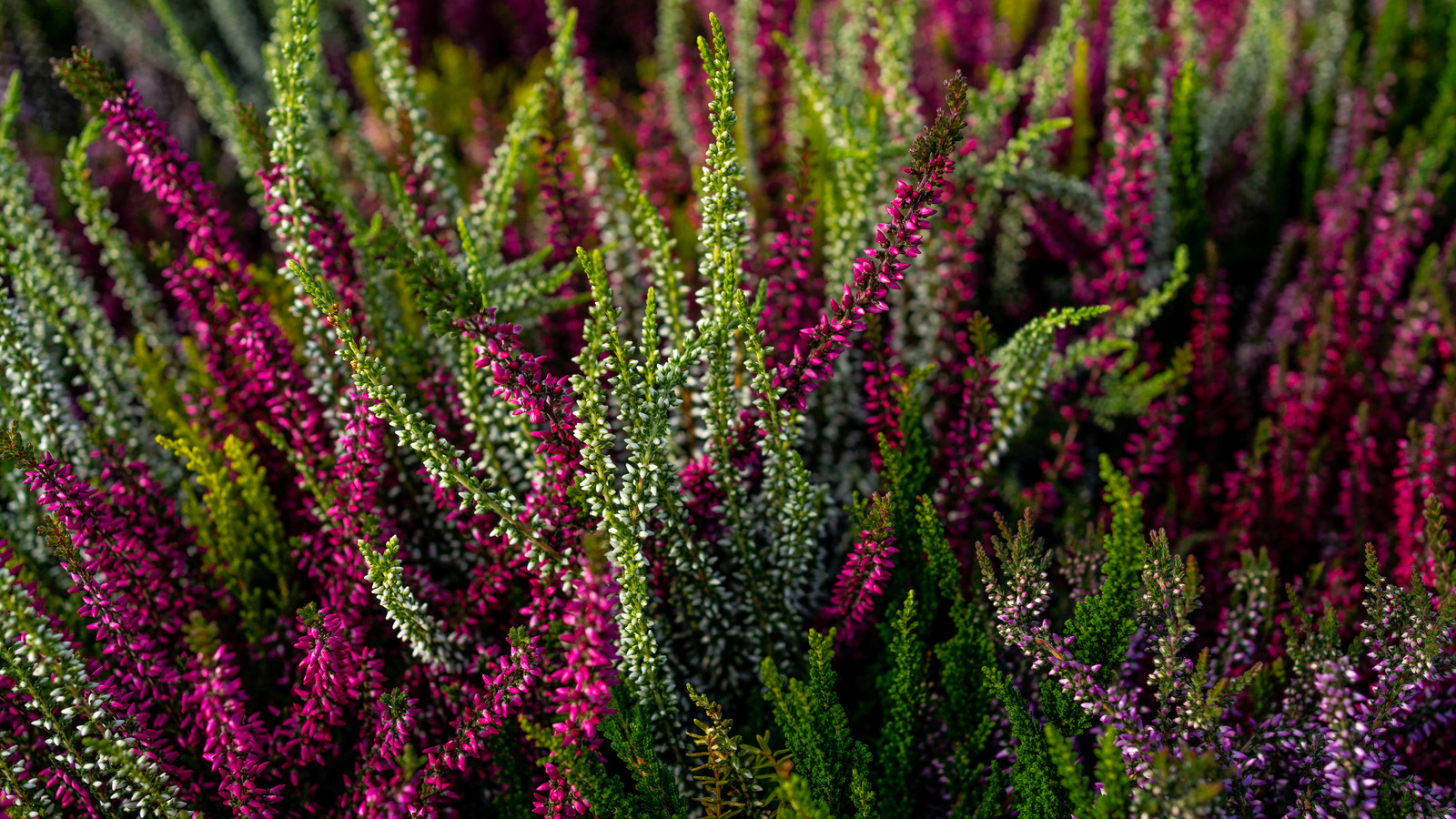
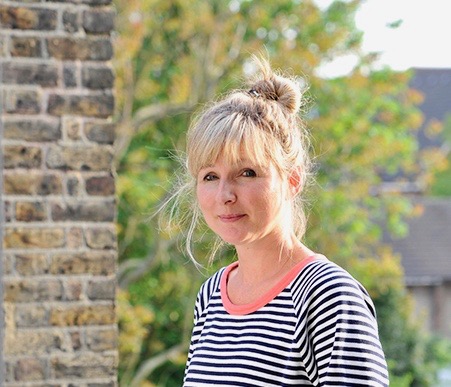
With wilder-looking gardens in style, heather makes a wonderful evergreen groundcover, providing glorious color from season to season. Its spiky stems of purples, pinks and whites look spectacular in containers and window boxes too.
Certain species of heather produce beautiful winter flowers, while other types are summer bloomers. The focus for this growing guide is on Calluna vulgaris, a summer-flowering species.
However, with a mix of Calluna vulgaris and winter heather cultivars, it's possible to have year-round color with this plant in your yard or in pots on your patio.
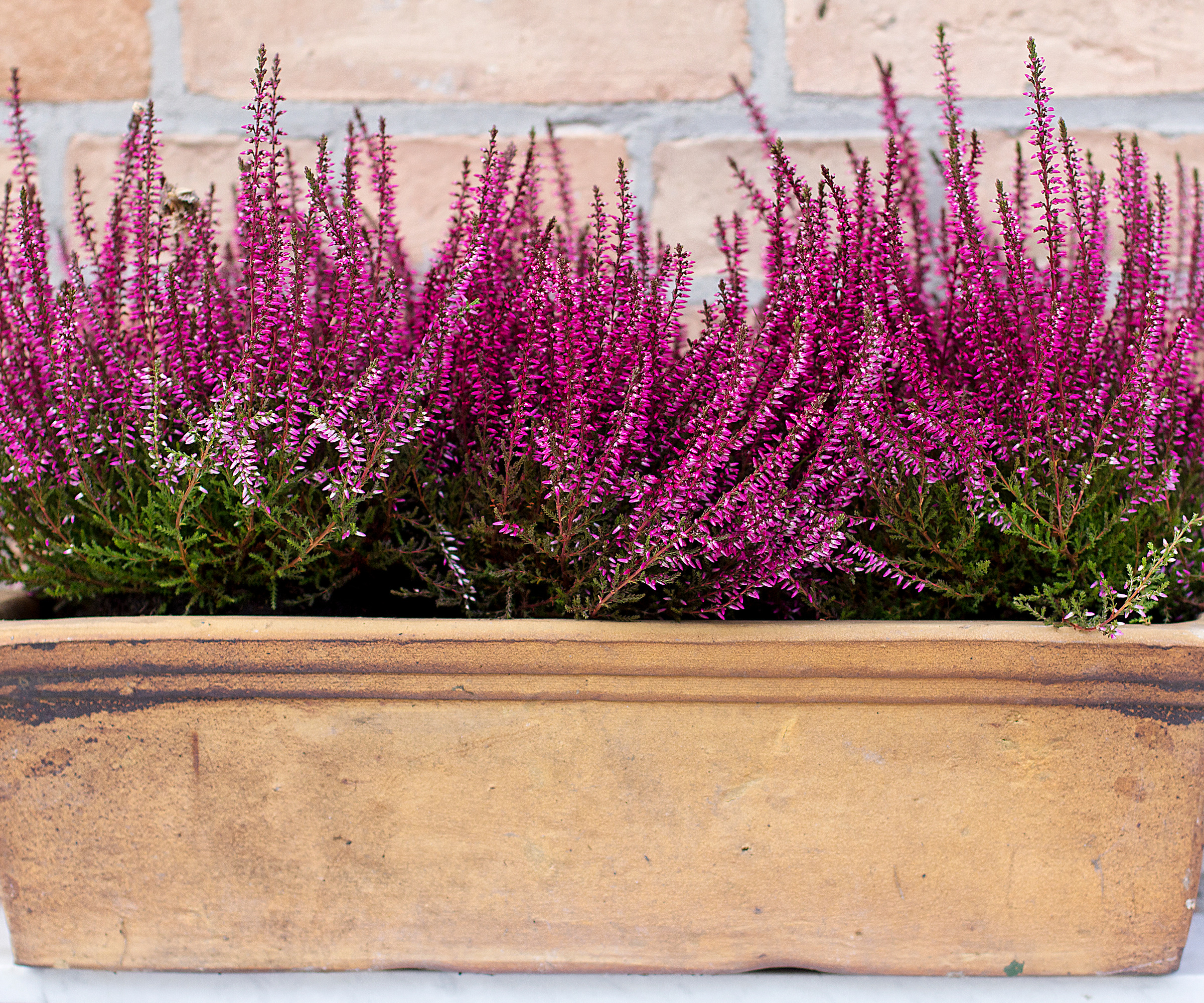
How to grow heather
This low-growing, perennial, evergreen shrub is primarily found on moors, dunes, bogs, heaths and hillsides. Native to much of Europe, Calluna vulgaris has since become naturalized in many parts of the northern US and Canada.
'In the US it is hardy in zones 4-6 and grows best in areas with cool summer climates,' explains Justine Kandra, horticulturalist, Missouri Botanical Garden. 'Heather likes full sun but may appreciate some afternoon shade if you're growing it in warmer climates.'
Be aware that heather is considered an invasive plant in some areas of the US, such as New England and parts of the Midwest, where it can crowd out native species in the wild. Therefore, planting heather in pots would be better than in the ground in these regions.

Justine Kandra is a horticulturist at the Missouri Botanical Garden in St. Louis, Missouri. A botanist by training, she enjoys helping patrons with their plant problems at the Kemper Center for Home Gardening.
Where to plant heather (calluna vulgaris)
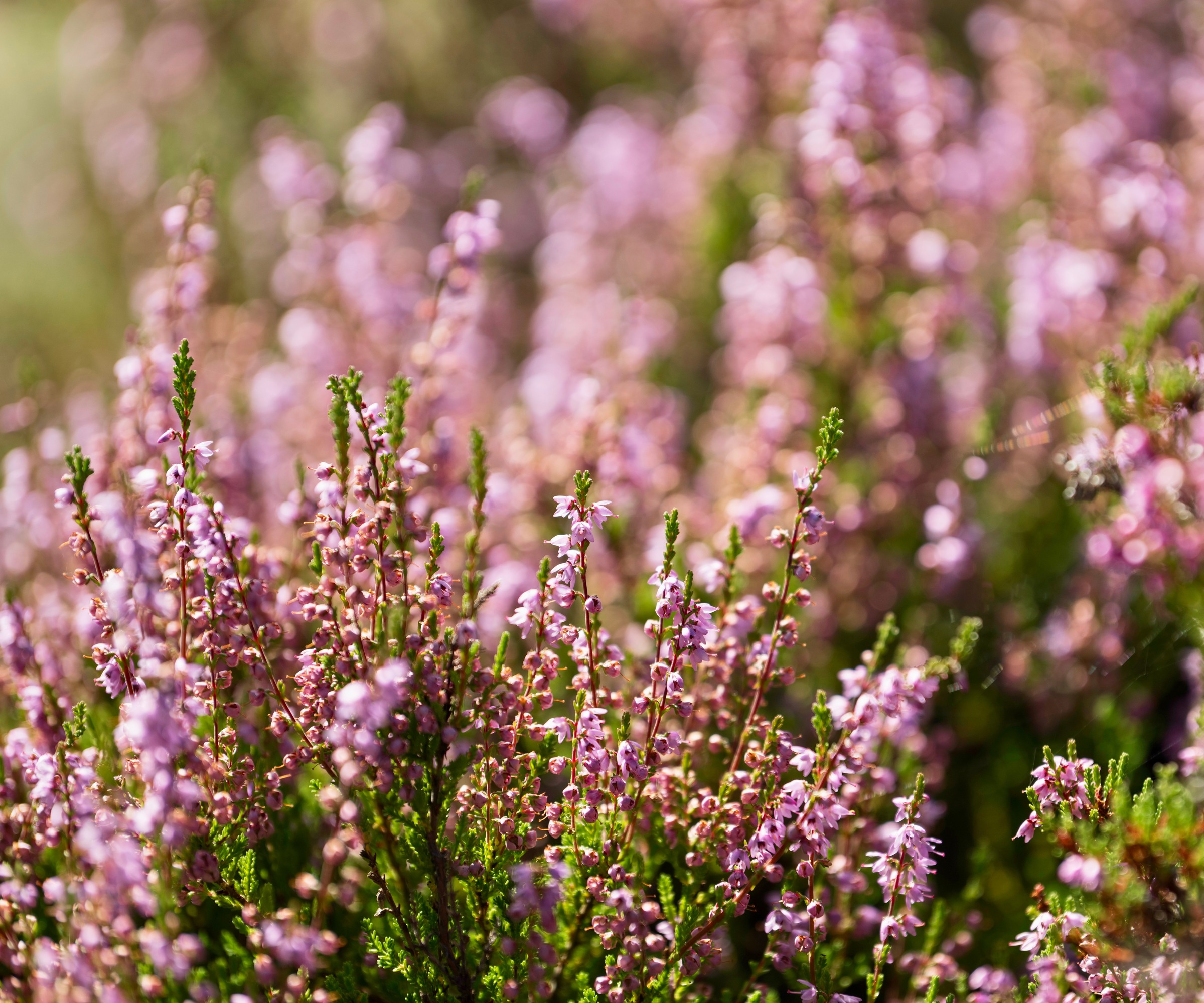
Calluna vulgaris is a great plant to include if you're keen to create a garden for pollinators. It's particularly well suited for planting in rock gardens, seaside gardens, large containers, or as a ground cover on hillsides.
'This plant requires evenly moist, very well-draining, acidic soil with a humus and sandy or gravelly [soil] texture,' says Justine. 'It does not grow well in clay soils or under dry or drought prone conditions.'
'Calluna vulgaris usually starts flowering in July and August, lasting until September - October, and sometimes November, depending on the climate,' says Nastya Vasylchyshyna, resident botany expert at Plantum.
'A mature heather can grow up to 8–16 inches (20–40 cm) and measure about 16–24 inches (40–60 cm) in width. In rare cases, its height can even reach 20–27 inches (50–70 cm).'
This firefly Heather - calluna vulgaris firefly from Walmart has pretty pink flowers which last from summer until fall.

Nastya Vasylchyshyna is a professional botany expert for Plantum, the app that helps identify plants and plant diseases and provides care recommendations. She has consulted on botany-related topics for Plantum for four years. She specializes in plant morphology, phytopathology, and plant physiology.
When and how to plant heather (calluna vulgaris)
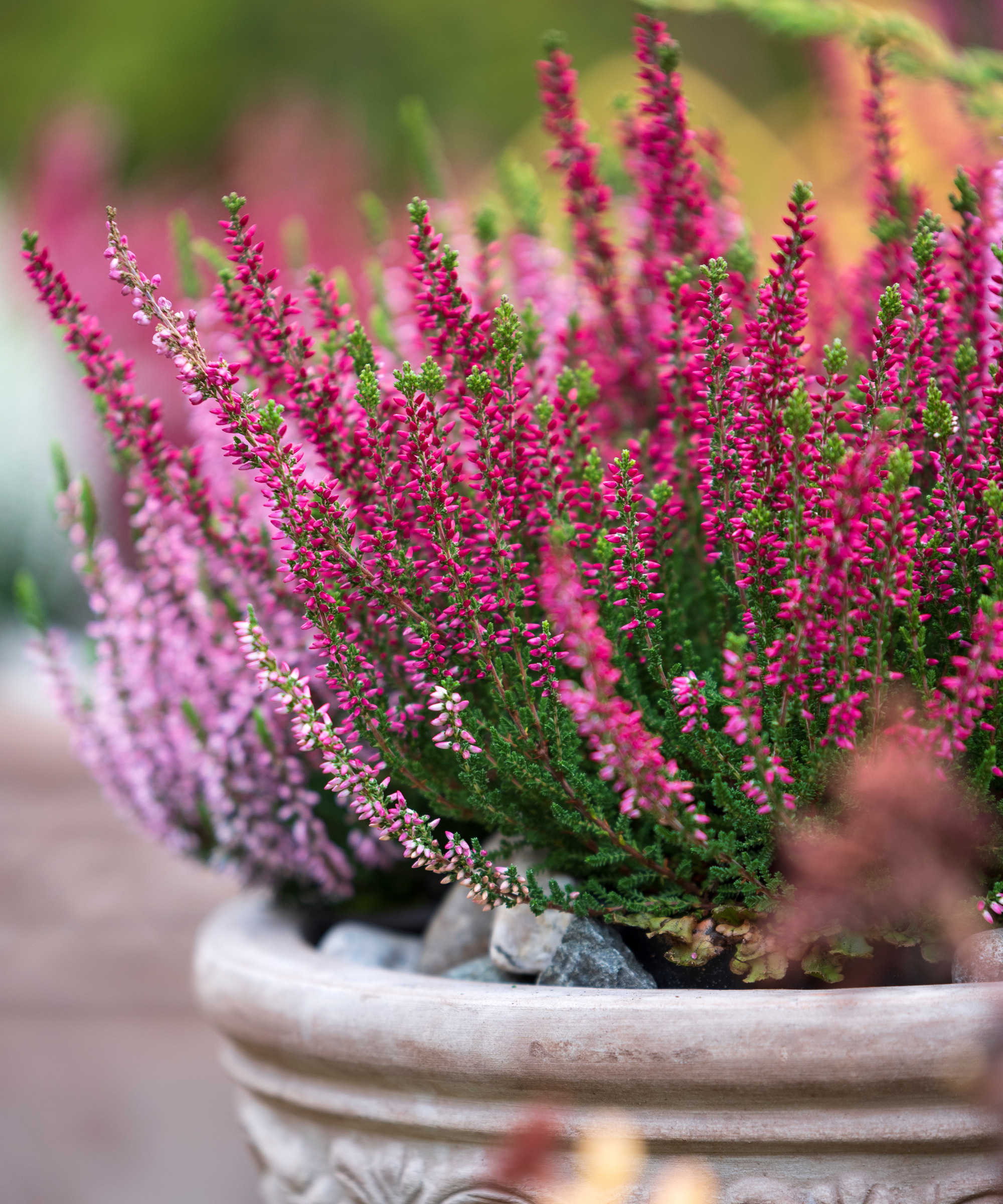
Planting your calluna vulgaris at the right time will help it to establish and thrive, whether it's in the ground or a container garden.
'Because heather is evergreen, planting in spring is recommended so that plants have the maximum amount of time to get established before winter,' says Justine. 'Though not ideal, planting in the fall is an option but be diligent about keeping the soil evenly moist.'
'To provide your plants with good ventilation and even lighting, plant them about 20 inches (50 cm) apart,' adds Nastya. 'Once your Calluna vulgaris develops a strong root system and gets fully established, it’ll become quite drought-tolerant. However, you should water it regularly for the first few months after planting to help it adapt.'
If you're planting calluna vulgaris in a pot, ensure it's at least 18 inches in diameter and has drainage holes. A regular watering with this galvanised watering can from Fast-Growing Trees will keep your heather sufficiently hydrated.
Care guide for heather (calluna vulgaris)

Soil: For outdoor heathers, go either for a loamy substrate enriched with sand and peat-free ericaceous compost or loamy sand with nutritious manure or compost. 'It’s important to take the acidity of the soil into account,' says Nastya. 'It can range from slightly to fully acidic, with a pH level between 4 and 5.5, but not above 6. The heather won’t be able to develop in neutral or alkaline soil.
'If the soil is alkaline, you can acidify it by adding peat, conifer needle litter, and pine bark. Ideally, replace peat with a more environmentally friendly solution, such as a peat-free ericaceous compost. You can also use ammonium-based fertilizers to acidify the soil.'
Test your soil to see if it requires amending with this pH meter from Garden Hand Tools at True Leaf Market.
Light: Calluna vulgaris is adapted to full sun in cooler climates. However, if you're growing it in a region with hot summers, ensure it has some shade.
Watering: Keep the soil moderately wet but not soggy, avoiding both under and overwatering. 'On average, you need to water the heather about once or twice a week,' says Nastya. 'The soil in a pot dries out faster than in the open ground. So, in warm weather and bright sunlight, you may need to water your potted plants three or four times a week, depending on how fast the soil dries out.'
Fertilizing: Keep fertilizing to a minimum, as heather is generally well adapted to the low-fertility soils of its native habitat. 'A spring application of compost should be sufficient,' says Justine. 'When grown in a container, use a fertilizer that is made specifically for acid-loving plants and apply it once in the spring following the package instructions.'
Pruning: 'In the right conditions, heather is fairly maintenance free,' says Justine. 'Although, it does benefit from an annual spring pruning to encourage new growth. This will also keep the shrub from becoming leggy and taking on an unkempt appearance.'
FAQs
What should I plant with heather (calluna vulgaris)?
Knowing which plants to site together isn't just about aesthetics. There are a number of perennials you should never plant together. This is because some plants prefer acidic soils, while others prefer alkaline. Some species flourish in sunny areas, while others prefer shade - or are fast-growers that can easily crowd others out.
'Because heather requires acidic soil and sunny conditions, it will pair well with plants that also prefer acidic soils and will not get so large that the heather will become shaded,' explains Justine. 'Some examples include dwarf conifers, heaths (Erica spp.), bearberry (Arctostaphylos uva-ursi), purple moor grass (Molinia caerulea), and tufted hair grass (Deschampsia cespitosa).'
Finding out which plants have similar requirements for soil and light and complimentary growing habits –and planting them together– will help them all to thrive. It will also ensure your garden ideas result in a beautiful yet low-maintenance outside space.
Sign up to the Homes & Gardens newsletter
Design expertise in your inbox – from inspiring decorating ideas and beautiful celebrity homes to practical gardening advice and shopping round-ups.
Jacky Parker is a freelance lifestyle journalist and writer, producing a wide range of features for magazines and websites. She has written for Homes & Gardens and its sister titles, Livingetc and Country Homes & Interiors for more than 15 years, both as a freelance contributor and staff member, regularly reporting on the latest interiors, gardens and lifestyle inspiration, speaking to experts in their respective fields and discovering the newest tips.
You must confirm your public display name before commenting
Please logout and then login again, you will then be prompted to enter your display name.
-
 ‘It leads to more headaches than it's worth’ – 4 reasons you should never store things in your oven, including fire risks and serious illness
‘It leads to more headaches than it's worth’ – 4 reasons you should never store things in your oven, including fire risks and serious illnessYour oven is for cooking, and cooking only, experts urge
By Chiana Dickson
-
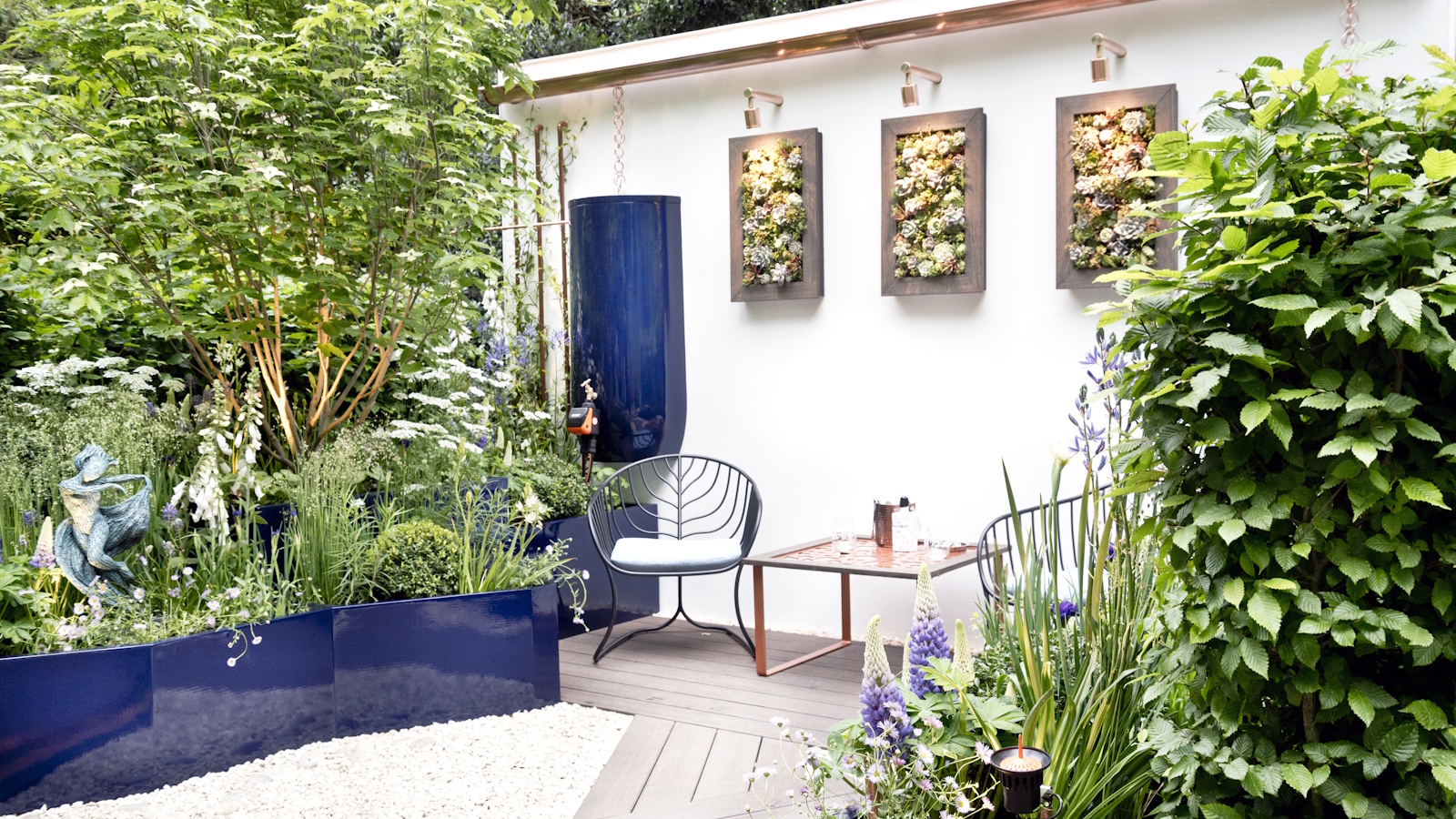 Urban gardening ideas – 7 creative ways to grow in small spaces, balconies, containers, indoors, and more
Urban gardening ideas – 7 creative ways to grow in small spaces, balconies, containers, indoors, and moreMake the most of your space with these innovative ways to garden
By Tenielle Jordison